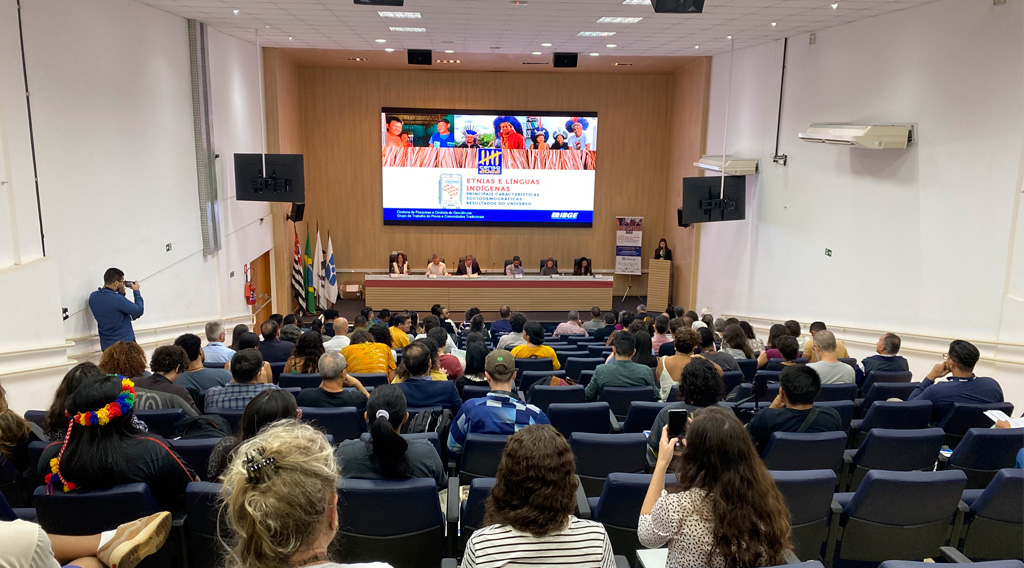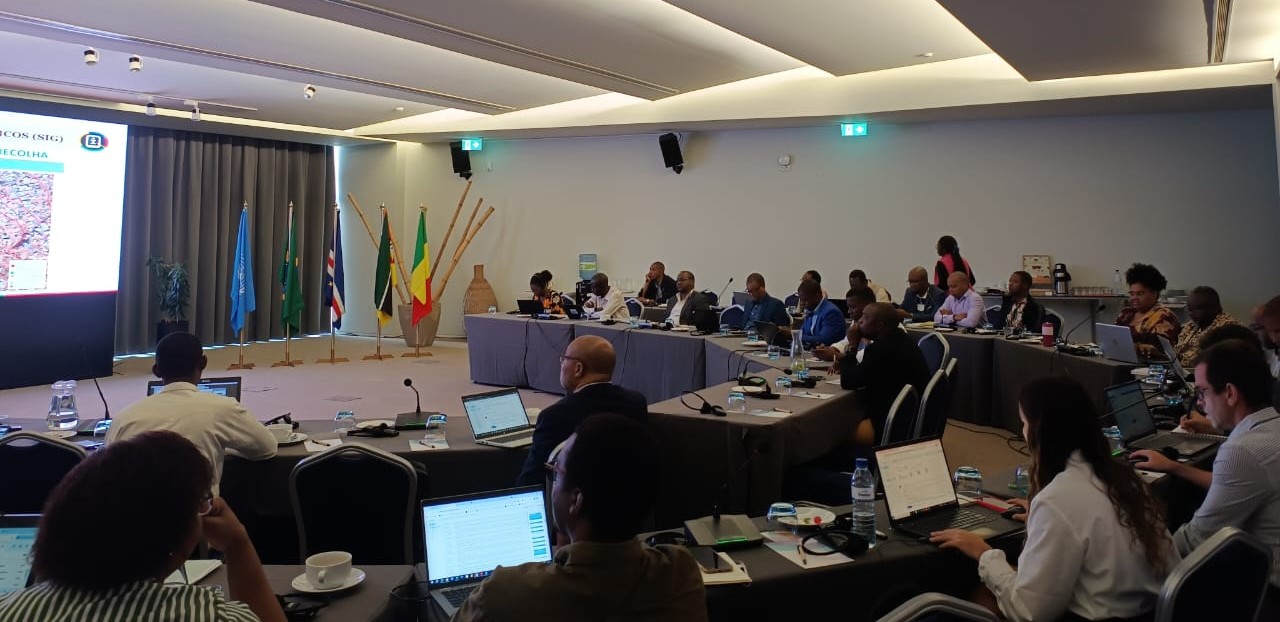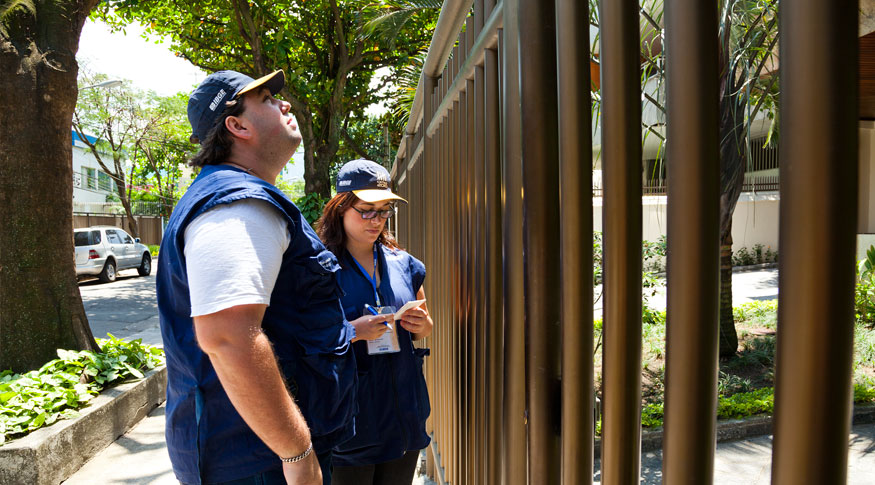Continuous PNAD
Annual average unemployment rate decreases in most states in 2021
February 24, 2022 09h00 AM | Last Updated: February 25, 2022 01h20 PM

The average annual unemployment rate in Brazil fell from 13.8% in 2020to 13.2% in 2021 e esse movimento de queda foi acompanhado pela maior parte das regiões. Also, 19 of the 27 Federation Units also recorded decreases in the annual rate and three remained stable. Only five states recorded increases in the annual average of the unemployment index. Even so, this annual unemployment average in 2021 is still the second highest since the start of the series in 2012, only after the 2020 figure.
These data can be found in the Continuous National Household Sample Survey - Continuous PNAD, released today (24) by the IBGE. The exception among Major Regions was the North, which recorded an increase of 0.6 percentage points, with a change from 12.5% in 2020 to 13.1% in 2021. The Northeast remainded stable but it still holds the highest rate in the country, having closed 2021 at 17.1%.
On the other hand, the South region was the only Major Region whose annual average was equivalent to the pre-pandemic index, with 7.8%, lowest annual unemployment rate in the country, after a result of 8.7% in 2020. And the Central West has approached the same level as in 2019 (10.3%), being at 1.7% em 2021, após chegar a 12,1% em 2020.
“All the Major Regions recorded expansion in the number of workers, and that has added to the reduction of unemployment rate in 2021, but only the South recorded an indicator below the 2019 level, prior to the pandemic, highlights Adriana Beringuy, survey analyst.
Three Federation Units recorded stability or remained close to it in the annual average unemployment rate in 2021: Acre (15.3%), Paraíba (14.8%) and Ceará (13.4%). Those recording increase were Pernambuco (from 17.2% in 2020 to 19.9% in 2021), Amapá (from 15.0% to 16.6%), Piauí (from 13.2% to 13.6%), Tocantins (from 12.0% to 13.3%) and Pará (from 10.6% to 12.56%). All the other states recorded decrease of rates.
In the quarterly comparison, all the Major Regions recorded decreases
Unemployment rate in the country in quarter 4 2021 was 11.1%, with a decrease of 1.5 percentage points (p.p) from Q3 2021 (12.6%) and of 3.0 p.p from the same quarter in 2020 (14.2%). All the Major Regions recorded decreases against the previous quarter, with the Northeast (17.6%) recording the highest index. Also, unemployment fell in 15 Federation Units, with the highest figures recorded by Alagoas (2.6 p.p.) and Sergipe (2.5 p.p.).
The highest unemployment rates were those of Amapá (17.5%), Bahia (17.3%)and Pernambuco (17.1%). The lowest rates were reported in Santa Catarina (4.3%) Mato Grosso (5.9%) and Mato Grosso do Sul (6.4%).
Unemployment is highest among those aged 25 to 39
Also in Q4 2021, the distribution of unemployed persons in the age groups of 25 to 39 (35.2%) and 18 to 24 (30.8%) was at a level above the estimates in other age groups.
The employed population in relation to the population at working age (employment population ratio) reached 55.6% in the period, with expansion of 1.5 percentage points in comparison with the previous quarter and of 4.5 percentage points against Q4 2020. All the Major Regions recorded increase in both comparisons.
North and Northeast have lowest percentage of workers with a formal contract
Estimated at 95.7 million persons in the fourth quarter of 2021, the employed population comprised 66.9% of employees – including domestic workers –, 4.9% of employers, 25.6% of self-employed workers and 2.3% of assisting family workers. In the North (33.9%) and Northeast Regions (30.5%), the percentage of self-employed workers was higher than reported in the other Major Regions.
In addition to that, 73.5% of workers in the private sector had a formal contract, with the lowest estimates of this indicator being reported by the North (59.4%) and Northeast (56.9%). Among domestic workers, the survey showed that 24.6% of them had a formal contract. In the same quarter in 2020, this proportion had been 25.6%.
Among the Federation Units, the biggest percentages of workers with a formal contract in the private sector were in Santa Catarina (87.9%), São Paulo (81.5%), Rio Grande do Sul (80.9%) and the smallest, in Piauí (48.6%), Maranhão (50.0%) and Pará (51.1%).
The percentage of self-employed population in the country was 27.1% The North (33.9%) and Northeast Region recorded the biggest percentages. The Federation Units with the highest percentages were Amapá (38.0%), Amazonas (36.2%) and Pará (35.0%) and the lowest, Federal District (20.9%), Mato Grosso do Sul (23.6%) and São Paulo (23.7%).
The informality rate in Q4 2021 stayed at 40.7% of the employed population. The highest rates were those of Pará (62.7%), Maranhão (59.4%) and Amazonas (58.7%) and the lowest, Santa Catarina (27.3%), São Paulo (31.2%) and Rio Grande do Sul (33.0%)./p>
All the Major Regions recorded decreases in average earnings
In Q4 2021, the average monthly real usual earnings from all the activities, of persons aged 14 and over, employed in the week of reference, with income from work, was estimated at R$ 2,447. This result recorded a decrease of 3.6% against the previous quarter (R$ 2,538) and of 10.7% in relation to the same quarter a year ago (R$ 2,742).
The comparison between the 3rd and 4th quarters shows that the Central West was the only one to record statistical stability and the other recorded decreases. Against Q4 2020, all the Major Regions recorded decrease of average earnings.
More about the survey
Continuous PNAD is the main instrument to monitor workforce in Brazil. The survey sample per quarter corresponds to 211 thousand households surveyed in Brazil. Nearly two thousand interviewers work in the survey in 26 states and in the Federal District, integrated to the data collection network of more than 500 IBGE branches.
Due to the Covid-19 pandemic, the IBGE implemented data collection by telephone on March 17, 2020. The id of the interviewers can be confirmed at the Answering the IBGE website or through the Call Center (0800 7218181) by checking their ID numbers, which can be requested by the informants.




















